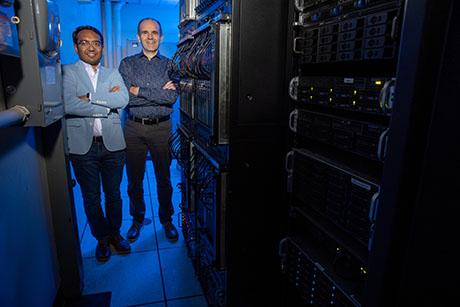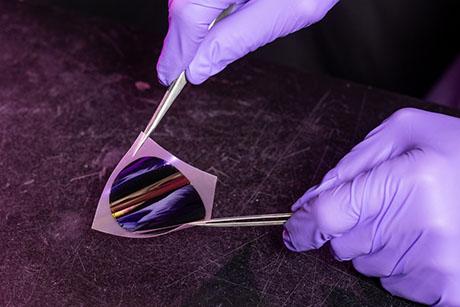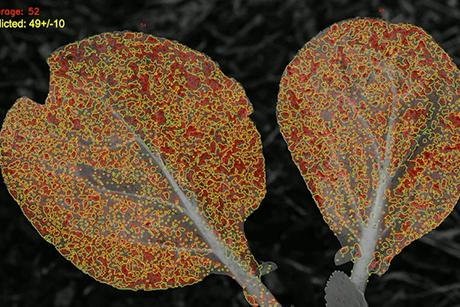A Customizable Curriculum
The 2-A Flexible Degree Program Offers In-Depth Undergraduate Study
 |
Professor Youcef-Toumi directs students in one of MechE’s robotics courses, Course 2.12 Introduction to Robotics. |
| Photo Credit: M. Scott Brauer |
by Alissa Mallinson
As is often the case, the MIT Department of Mechanical Engineering is leading the way. This time, it’s in the area of undergraduate education, with the newly revamped flexible degree program 2-A.
One of the first mechanical engineering programs in the world to offer a customizable curriculum alongside a rigorous core in mechanical engineering and the ability to concentrate in one of several modern engineering areas, the Department’s 2-A program is garnering a lot of attention in the US and around the world.
“The key is hitting the right balance between rigor and flexibility,” says Undergraduate Education Officer Professor Anette “Peko” Hosoi. “Once 2-A became accredited in 2002, students knew they’d be getting the same engineering rigor they would get in Course 2, as well as the freedom to focus on topics that are specifically interesting to them, like energy or robotics or manufacturing. So I think it’s that particular combination that’s appealing to the students.”
Since 2002, enrollment in the program has increased 10-fold to the point where 45% of mechanical engineering majors are currently enrolled in 2-A. Meanwhile, Course 2 enrollment remains steady, indicating a growing interest in mechanical engineering more broadly.
The Mechanical Engineering core requirements for both degree programs are exactly the same in the sophomore year; then changes start to occur in the junior year, when Course 2 students are required to take four specific courses, but Course 2-A students only two, allowing them to begin honing in on an area of focus for their remaining third-year credits. From there, Course 2-A students are given the flexibility to take 6 12-credit upper-level courses in a concentration area they choose in conjunction with the Course 2-A advisor.
Students love the choice, especially those who go into it with a very targeted career plan – they know they want to go into the energy or robotics field when they graduate, for example. They can focus in on what they’re most interested in, which is often difficult to do in a traditional accredited engineering program.
Choices, Choices
Based on the numbers, what are students choosing? With more than 20% of 2-A students concentrating in robotics, the area of Control, Instrumentation, & Robotics is currently the clear winner.
However, Management and Product Development aren’t far behind, with 15% to 20% of students focused in each of those areas. Data also shows that Manufacturing, Biomedical, Industrial Design, Entrepreneurship, and Transportation are all on students’ radar.
To make it even easier to concentrate on a particular mechanical engineering area, this year the program has implemented even more flexibility. Instead of offering 6 12-credit core courses, students can now build a core from 13 different options, three of which are traditional 12-credit courses, and 10 of which are 6-credit course modules.
But are they getting a less thorough understanding of the material?
No, says Hosoi. “I think the students in 2-A are actually getting a more in-depth education,” she says. “Normally if someone is interested in robotics, for example, they have very little space in their schedule to squeeze the electives in. But now students can put together a substantial group of classes that allows them to focus on their field of interest. Robotics is a great example because, in addition to the Course 2 electives, they can also take upper-level classes in Course 6 (Electrical Engineering and Computer Science).
“It’s a very important program,” says Hosoi, “because it shows that you can provide an extremely rigorous accredited engineering education while still adapting to the modern themes that are emerging in real engineering jobs.”


